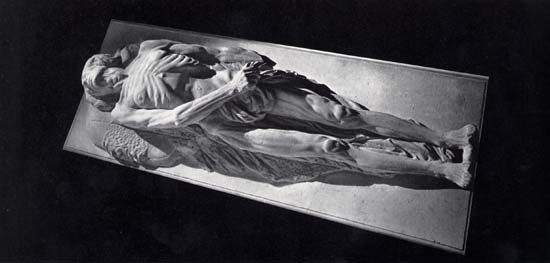An acquaintance died of AIDS in 1986, the first I knew to go: he left behind a book by Erwin Panofsky called Tomb Sculpture, which gravitated to my apartment. It was only after I had lived through many more deaths, including those of my two partners, that I came to look at it in detail. I kept it all those years because I knew it was somehow intended for me, but in what way I was not aware.
When I read Panofsky's history of the representation of death, the phenomenon of the transi called out to me: despite often macabre effects, these images of the dead, usually naked and partially decomposed, picture the "collective relevance" of life on earth, rather than individual achievements and status. They were common in northern Europe in the fifteenth and sixteenth centuries.
